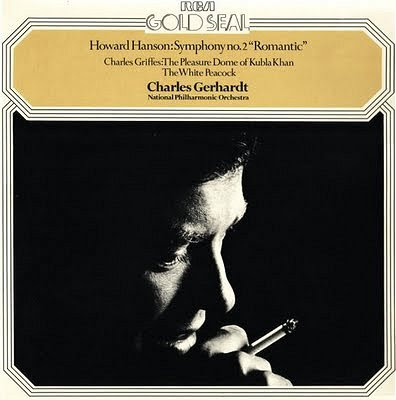Classical music can learn a lot from our feline friends
This cat lives in the house in Assas that was the home of the legendary harpsichordist Scott Ross from 1984 until he died of an Aids related illness five years later. I took the photos a few days ago on the front porch of his little house in Languedoc and they may be more than just charming images. Because Scott Ross’ biographer Michel Proulx tells us that the harpsichord master adopted a black and white female cat while living at Assas. So could we be looking at a hitherto unknown member of a great music lineage?
The sleeve notes of Scott Ross’ first LP identified him as a cat lover; in later years his cats accompanied him on transatlantic flights and his feline friends provided the only lasting relationships in an otherwise solitary life. Anthropologist Desmond Morris has observed that “artists like cats; soldiers like dogs”, and there may be a scientific explanation as to why musicians in particular are attracted to cats. As this extract from Akif Pirinçci and Rolf Degen’s book Cat Sense explains.
"In cats… it seems that information can switch from one channel (hearing) to another processing track (sight), performing an action scientifically described as synaesthesia. Synaesthesia is the amalgamation of different sensory channels which usually function quite separately. Sounds are perceived as images, while smells are ‘felt’ as a gentle touch… Synaesthesia is frequently found in literature in the form of metaphorical descriptions of feelings that are difficult to define precisely. The poets of the Romantic period were particularly fond of synaesthesia; they also tended to like cats, and produced several immortal works of feline literature, in particular the delightful fairy tale of Puss in Boots and E.T.A. Hoffman’s The Philosophy of Life of Murr the Cat. The Romantics, consumed by a sense of unquenchable longing and using poetry to cast a spell of enchantment over everyday life, used the stylistic device of synaesthesia to reveal hidden connections and to cross frontiers of meaning.Peter Brook urged his actors to “think like a cat”, and there is much that classical music can learn from our feline friends. Switching information between visual and auditory sensory channels may be the key to engaging young audiences, because visual acuity is better developed than aural acuity in young people today. Scott Ross understood the importance of creating aural images – he once said “It may be neither elegant nor aristocratic, but… I can see no shame to being a bit tarty in front of hundreds of persons… it’s a show” - and Denis Diderot’s Paradoxe sur le comedien was mandatory reading for his students. My photo essay on Scott Ross’ house in Assas is titled Scott Ross and the paradox of genius.
However, evolution can hardly have created synaesthetic nerve cells just so that the cat could reel intoxicated about the place in a state of poetic rapture. The task of such related perceptions is probably to give the cat more precise information about the outside world, presenting it to the mind’s eye as a complete and fully dimensional work of art. Cats are supposed to have astonishing abilities to find their way home unerringly over incredible distances. Perhaps they really do have a synaesthetic aural image of the sounds of home stored in the memory, and make their way towards that image step by step. One hardly likes to surmise what visions a cat may have on hearing a loud hiccup or even a symphony by Mahler".
* Perhaps my suggestion that a great music lineage lives on in Assas is less whimsical than it first seems - see this update.
I am indebted to Michel Proulx not only for his biography of Scott Ross Unfinished Destiny but also for his generous assistance in helping me locate Scott Ross’ house in Assas – let us hope Michel succeeds in porting the text of his biography from his elderly Mac so that it can reach the audience it deserves. This post is being uploaded from a MacDonald’s along the coast from Montpelier, so I hope its spontaneity compensates for any lack of polish. Photos are © On An Overgrown Path 2013 and any other copyrighted material on these pages is included as "fair use", for the purpose of study, review or critical analysis only, and will be removed at the request of copyright owner(s) Also on Facebook and Twitter.










Comments
The "explanation as to why musicians in particular are attracted to cats" seems applicable to our family. My wife and have played at a few instruments and she sings in two choirs. Both grown daughters continue to be interested in music. One is now a professional dancer and the other a budding stage manager (mostly for musical events/festivals) and occasional fill-in flutist/keyboard player. Artsy people all over the place, and cat rather than dog people every one.
The other reason that I prefer cats has to do with the reality that they tend to be more "animal" than dogs do. As I've said to dog-owning friends at least partly in jest, dogs tend to be snivelling boot-licking toadies. This is of course a deliberate slur, based on the more social/pack life of doggie ancestors.
A thought-provoking piece ... thanks again.
I hypothesize that the eidetic memory is the base of my synaesthesia, for my extraordinarily vivid and detailed picture of where something took place at once evokes the smell of the place, extraneous sounds and, most important, what was said. Decidedly helpful in arguments over issues in the past. However, despite being steeped in music for nigh on my whole life, I'm a dog person. We shall soon know more about all this, for synaesthesia is lately the focus of much research by neurologists.